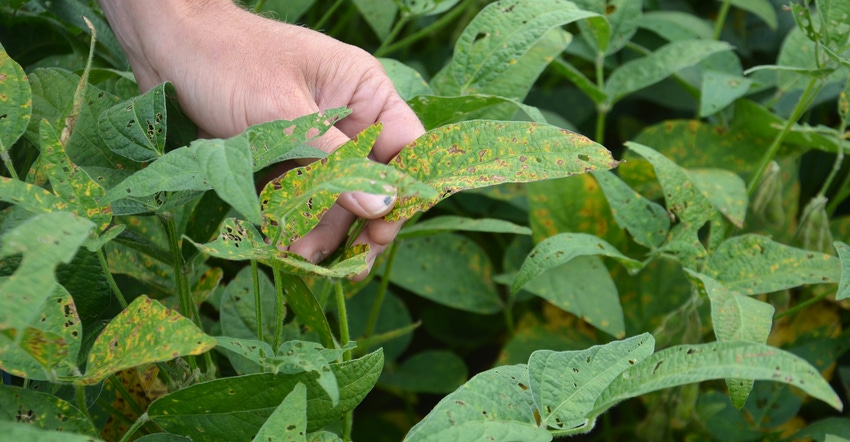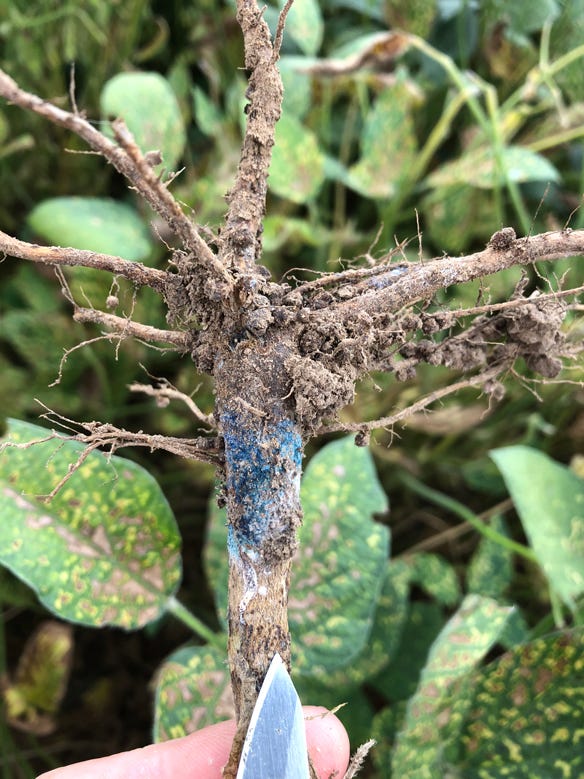
Sudden death syndrome prefers cool, wet weather early in the season to infect soybean plants. So why didn’t we see lots of SDS in 2019? After all, it was one of the coolest, wettest springs with the longest planting delay for soybeans ever, especially in the eastern Corn Belt. Why is the disease showing up in more fields and attracting more attention in 2020? Most people believe weather patterns were much closer to normal in 2020 compared to 2019.
“Think back to 2019 again,” says Steve Gauck, regional agronomy manager for Beck’s, based near Greensburg, Ind. “It was so wet early that most soybeans weren’t planted until June, once most areas finally got a few breaks in the weather. For the fungus that causes sudden death syndrome to infect soybeans, plants must be in the ground, not still in the bag. Infection is most likely when soybeans are in early vegetative stages.
“In 2020, many people planted soybeans in April or early to mid-May. Then it turned cool and wet. Soybeans were up and in early vegetative stages. It was a much better setup for the SDS pathogen to infect a broad number of fields and acres compared to 2019.”
Closer look at SDS
In fact, this year featured the ideal setup for the SDS pathogen in many locations, Gauck says. If you were writing a recipe to produce maximum SDS infection, it might go like this:
Dial in cool, wet weather when soybeans are in early stages of vegetative development — check.
Provide wet conditions at flowering. While some areas were dry for parts of June, rain often returned while flowering was still underway — another check.
Follow up that part of the season with warm, dry weather — check.
According to the Purdue University Corn & Soybean Field Guide, that would be checkmate! Those are all the key conditions required for maximum expression of SDS symptoms. Gauck believes that’s why many people are seeing the disease this year — much more so than in 2019, even though 2019 featured one of the latest average planting dates for soybeans in nearly 40 years, caused almost entirely by a long stretch of cool, wet weather.

UNUSUAL SYMPTOMS: Steve Gauck found this bluish mold on the lower part of this soybean plant, which appeared to be hit early and hard by sudden death syndrome. It’s the first time he’s found this mold that appears to be associated with SDS.

Once SDS appears, there’s nothing you can do about it this year, Gauck says. “The best thing you can do is select varieties that demonstrate the best tolerance for it for 2021,” he says. “You can also plan on using seed treated with a fungicide that has proven effective against SDS.
“We have found that these fungicides aren’t foolproof. But they greatly reduce the number of plants that are infected, helping reduce impact on yield.”
Gauck says there is one upside to a year with heavy SDS pressure. “Plant breeders see how the materials they are developing perform against it this year,” he notes. “They can select lines that should lead to varieties with more resistance.”
About the Author(s)
You May Also Like




